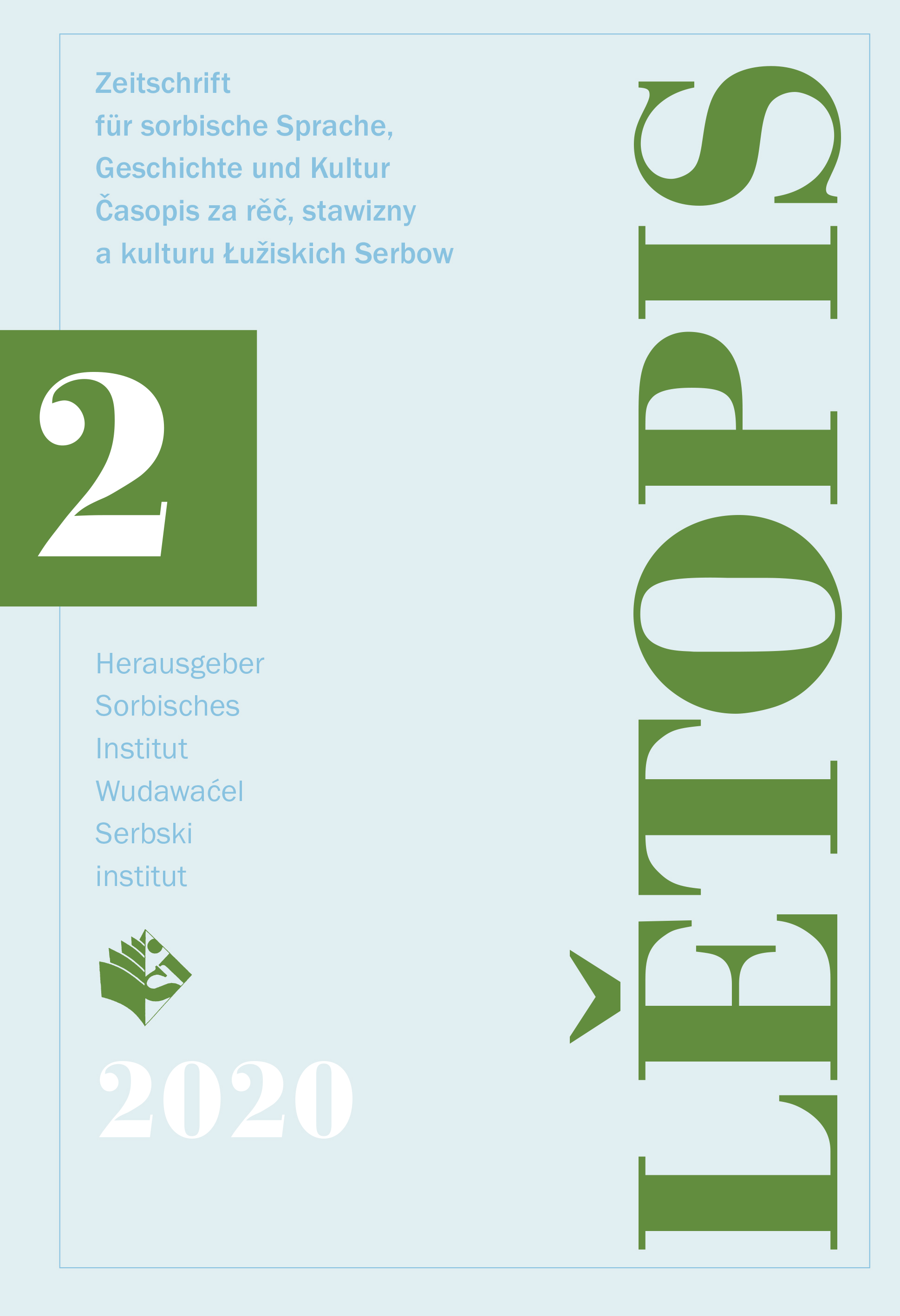Die Grenze des Brandenburger deutsch-sorbischen Gebiets in der Linguistic Landscape
The Border of the German-Sorbian Area in Brandenburg in the Linguistic Landscape
Author(s): Měto NowakSubject(s): Geography, Regional studies, Sociology, Ethnic Minorities Studies
Published by: Domowina-Verlag GmbH / Ludowe nakładnistwo Domowina
Keywords: Sorbs; Lower Lusatia; Brandenburg; linguistic landscape; settlement area; border; bilingual signage; place-name signage; train station; Brandenburg; Niedersorben; Siedlungsgebiet; Sprachgrenze; Ortssc
Summary/Abstract: There are still names in the Old Sorbian linguistic area, for which the explanations up until now have proved unsatisfactory. Amongst these are the six place names and two tribe names discussed in the article, some of which appeared in sources over a thousand years ago, for example Nessuci, Selpoli and Chozimi. They are very important for the study of the history of the Sorbian language, settlement and culture. Thus, the oldest evidence of the place name of Leuthen documents the earliest proof of the Lower Sorbian sound shift from e to o, cf. Old Lower Sorbian *Ľutoḿe sodło ‘site, settlement of L’utom’. The place name Pautzsch, Old Sorbian *Budč ‘settlement of Budk’ provides proof, together with many other examples, of the immigration of Old West Sorbian tribes from Bohemia and Moravia. The proper name contained in Nessuci, Old Sorbian *Nesudici ‘People of Nesud or Nesuda’, a defence name, gives us an insight into the beliefs of the Old Slavs. Their interpersonal relationships are illuminated by Mockzig, Old Sorbian *Mokrosuky, freely translated, ‘village of the sons of dogs’, an uncouth nickname.In socio-linguistic research of the linguistic landscape, conclusions about social and linguistic situations are drawn from linguistic presence, amongst other things. This approach is methodologically used in this article to investigate the marking of the border between the monolingual German and the bilingual German-Sorbian area in the state of Brandenburg. For this purpose, in 2015 – at a time when the revision of the traditional settlement area of the Sorbs/Wends in the state of Brandenburg was not yet reflected in the signposting – signs marking the location of places and borders were photographed and analysed. The findings were then related to the actual, legally defined area of Sorbian/Wendish settlement, whereby it can be observed that there are deviations in both directions. Constellations of protagonists are studied briefly. It becomes clear that from the sole consideration of the Linguistic Landscape without knowledge of the context it is not possible to draw conclusions about the processes behind it.
- Issue Year: 2020
- Issue No: 2
- Page Range: 45-76
- Page Count: 32
- Language: German
- Content File-PDF

